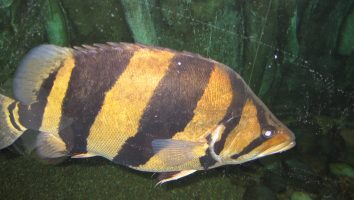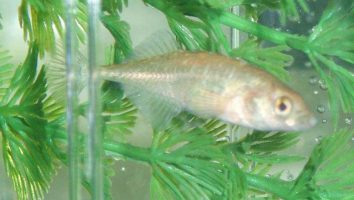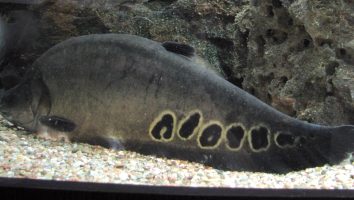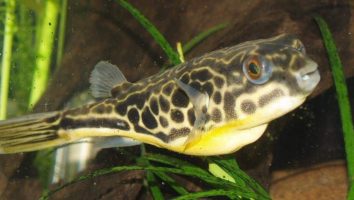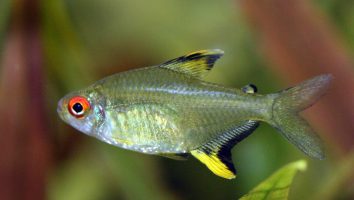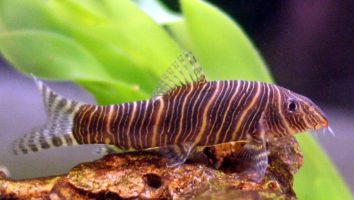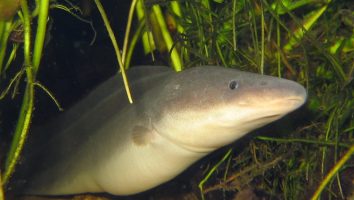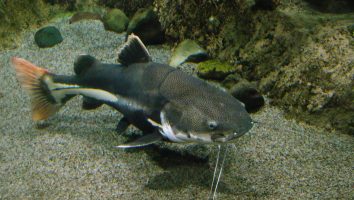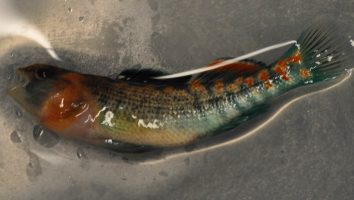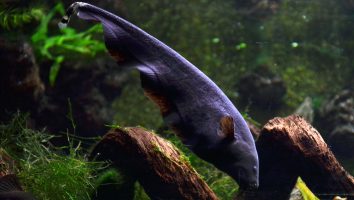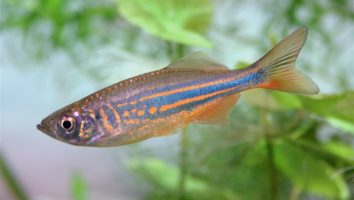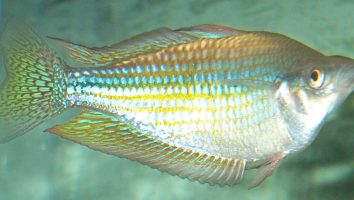The redtail catfish is a popular freshwater fish that is known for its large size and aggressive demeanor.
This fish is not for the faint of heart, and requires a dedicated owner who is willing to provide the necessary care and space.
In this Fish Academia guide, we will go over everything you need to know about redtail catfish care. This includes tank size, diet, tank mates, and more.
Table of contents
Species overview
The redtail catfish (scientific name: Phractocephalus hemioliopterus) is a freshwater fish that’s native to South America. It’s most commonly found in the Amazon Basin, which covers a large portion of Brazil, Peru, Colombia, and Ecuador.
This fish is a bottom-dweller and prefers slow-moving waters with plenty of places to hide. This could be in the form of plants, driftwood, or rocks.
The redtail catfish is one of the largest freshwater fish in the world and can grow to be up to 4 feet long! They are a popular choice for aquariums because of their size and their beautiful coloration.
One thing to keep in mind is that these fish are very active and need a lot of space to swim. They also produce a lot of waste, so having a good filtration system is a must.
Appearance
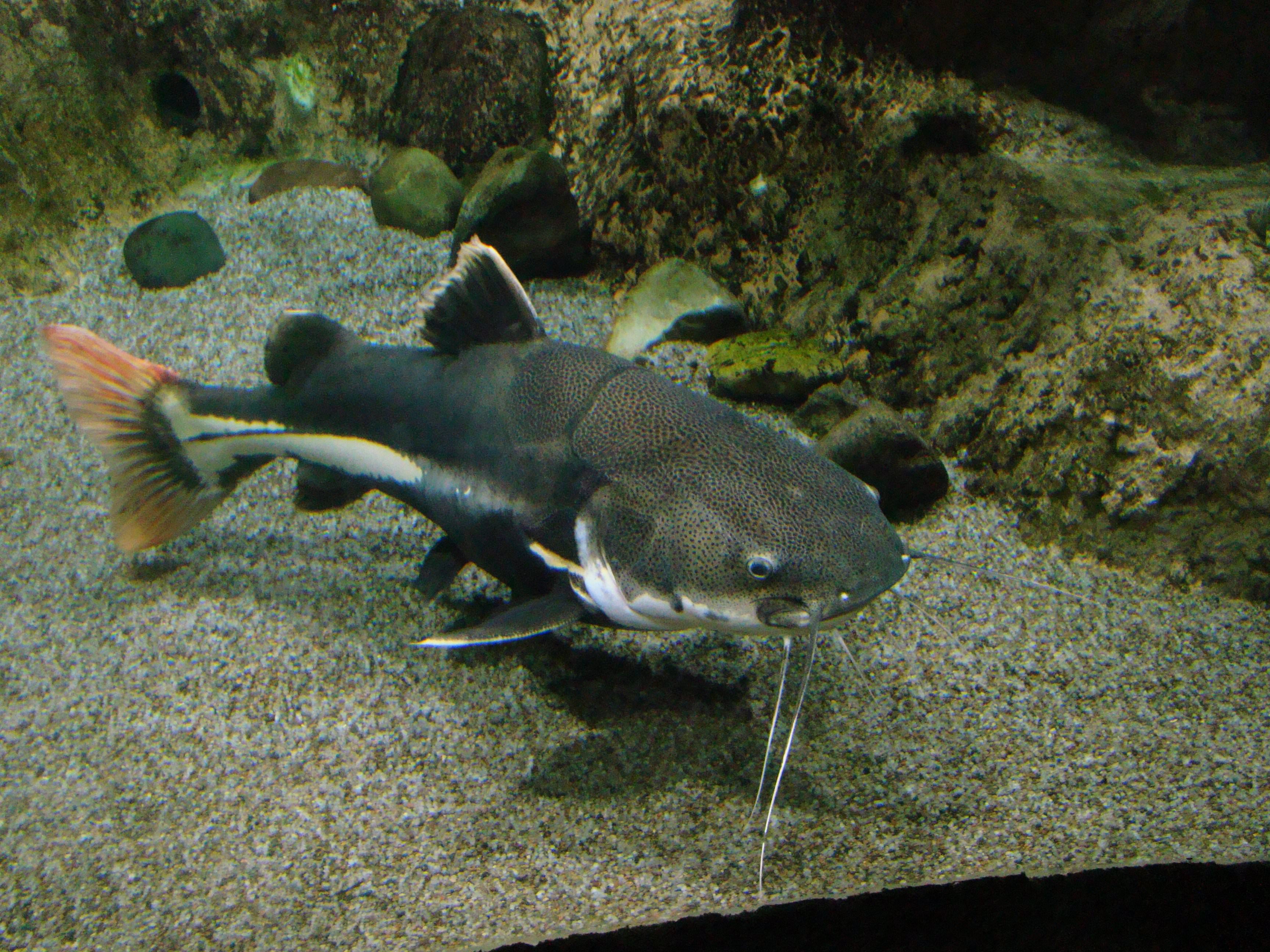
The most notable feature of this species is, of course, their tail. The vast majority of their tail is a beautiful bright red. The coloration on the rest of their body is a dark brown or black.
This dark coloration is broken up by a few white spots that are randomly distributed. These spots are more common on the lower half of the fish.
The body shape of the Redtail Catfish is long and thin. They have a slightly flattened head with large eyes that sit on the top.
Their dorsal fin is large and starts just behind their head. It runs the length of their body and ends at their tail. Their anal fin is much shorter and starts about two-thirds of the way back.
This fish also has small pectoral and ventral fins. The caudal fin is forked and relatively large.
One thing to note is that juvenile Redtail Catfish have a completely different coloration. They’re brown with a white belly and a black stripe running down their back.
Lifespan
Redtail catfish have a lifespan of 10 to 15 years. This is a pretty long time for a fish, and it’s one of the things that make them such a popular choice for aquariums.
Of course, the lifespan of your redtail catfish will be impacted by a number of different factors. Poor water quality, for example, can shorten their lifespan significantly.
It’s also worth noting that these fish tend to grow very quickly. They can reach their full size in just a few years. This rapid growth can also impact their lifespan, although it’s hard to say exactly how.
Size
The average redtail catfish size is around 24 inches, but they can grow to be as big as 36 inches long! As you can imagine, these guys definitely need a lot of space to swim and thrive.
Tank
Tank Size
The recommended minimum tank size for a Redtail Catfish is 125 gallons. If you want to keep more than one fish, you should add at least another 55 gallons for each additional fish.
While the Redtail Catfish is not as large as some of the other freshwater fish on this list, they are very active and need a lot of space to swim. They are also very messy eaters and produce a lot of waste, so a larger tank is necessary to maintain good water quality.
Water Parameters
Redtail catfish are one of the most popular freshwater fish in the aquarium trade. They’re large, active, and have beautiful coloration.
This makes them a bit more challenging to care for than some other freshwater fish. They need a bit more space and a bit more stable water conditions.
Here are a few general guidelines for keeping redtail catfish.
- Water temperature: 75 to 82 degrees Fahrenheit
- pH levels: 6.5 to 7.5
- Water hardness: 5 to 20 dGH
- Alkalinity Levels: 2-12 dKH
What To Put In Their Tank
When setting up an aquarium for a redtail catfish, there are a few things you need to take into account. First and foremost, these fish get BIG. We’re talking upwards of 4 feet long in some cases.
That being said, you’re going to need a pretty big tank if you want to keep one of these guys happy. A minimum of 100 gallons is recommended, but bigger is always better.
The type of substrate you use isn’t too important. They’re not known to be big diggers, so something like gravel or sand will work just fine.
As for decorations, you have a few different options. Since these fish love to hide, you can include things like caves, driftwood, or plants. If you want to keep things simple, a few pieces of driftwood will do the trick.
Just make sure that whatever you use can’t be easily knocked over. Redtail catfish are known to be pretty clumsy, and you don’t want to wake up one day to find your fish injured because of it.
Common Diseases
The Redtail Catfish is a hardy and relatively disease-resistant fish. However, they can still fall ill if they’re not kept in the proper environment.
The most common disease that affects this species is ich. This is a parasitic infection that will present itself as white spots on the body of your fish.
If left untreated, ich can be fatal. However, it can be easily cured with the proper medication.
Another disease to keep an eye out for is bacterial infections. These are usually the result of poor water quality and can cause a variety of problems for your fish.
The most common symptom of a bacterial infection is a change in behavior. Your fish may become lethargic or stop eating.
If you notice any of these changes in your fish, it’s important to take action immediately. Bacterial infections can be fatal if they’re not treated quickly.
The best way to prevent these diseases is to maintain a clean and stable environment for your fish. A well-maintained tank will go a long way in keeping your fish healthy and disease-free.
Behavior & Temperament
The redtail catfish is a peaceful fish that is relatively easy to care for. These fish are nocturnal, so they will be the most active at night. During the day, they will often hide among the plants or driftwood in your aquarium.
Even though they are peaceful, they are also one of the largest freshwater fish. They can grow up to four feet long, so make sure you have a big enough tank to accommodate them. They also need a lot of hiding places, so be sure to include plenty of plants and driftwood in your aquarium.
One thing to keep in mind is that redtail catfish are known to be fin nippers. This means they may nip at the fins of other fish in your tank. To avoid this, make sure you have plenty of hiding places for the other fish in your tank.
Tank Mates
The main thing you need to consider when picking tank mates for a redtail catfish is size.
These fish grow to be massive—up to 4 feet long in some cases! As a result, they need a lot of space and can easily overwhelm smaller tank mates.
It’s also important to consider the fact that redtail catfish are bottom-dwellers. They’re not going to venture to the top or middle of the tank very often.
With that said, here are some compatible tank mates that work well:
- Plecostomus
- Silver Arowana
- Green Terror
- Jack Dempsey
- Oscar
- Firemouth Cichlid
- Convict Cichlid
- Red Devil Cichlid
Breeding
Breeding redtail catfish is not for the faint of heart. It’s a difficult and dangerous process that should only be attempted by experienced fishkeepers.
The first step is to identify a male and female. Males are usually larger and have a more rounded belly. Females are smaller with a flatter belly.
Once you have your pair, you’ll need to set up a breeding tank. It should be at least 50 gallons and have plenty of hiding places. Driftwood and caves work well.
The water temperature should be between 80 and 84 degrees Fahrenheit. The pH should be between 6.5 and 7.0.
When the tank is ready, add the male first. Give him a few days to adjust before adding the female.
The female will lay her eggs in a cave or some other hiding place. The male will then fertilize them.
Once the eggs are fertilized, the male will guard them. He will also fan them with his fins to keep them oxygenated.
The eggs will hatch in about two weeks. The fry will be very small, so you’ll need to feed them live food. Baby brine shrimp and microworms work well.
As the fry grow, you can start to introduce them to pellets and other dry foods.
Redtail catfish are not the easiest fish to breed, but it can be done with some patience and experience.
Conclusion
The Redtail Catfish is an ideal fish for the beginner aquarist. They’re easy to care for, beautiful to look at, and get along well with other fish.
We highly recommend them to anyone who is thinking about starting a freshwater aquarium.
Do you have any experience with Redtail Catfish? We’d love to hear about it in the comments below!

